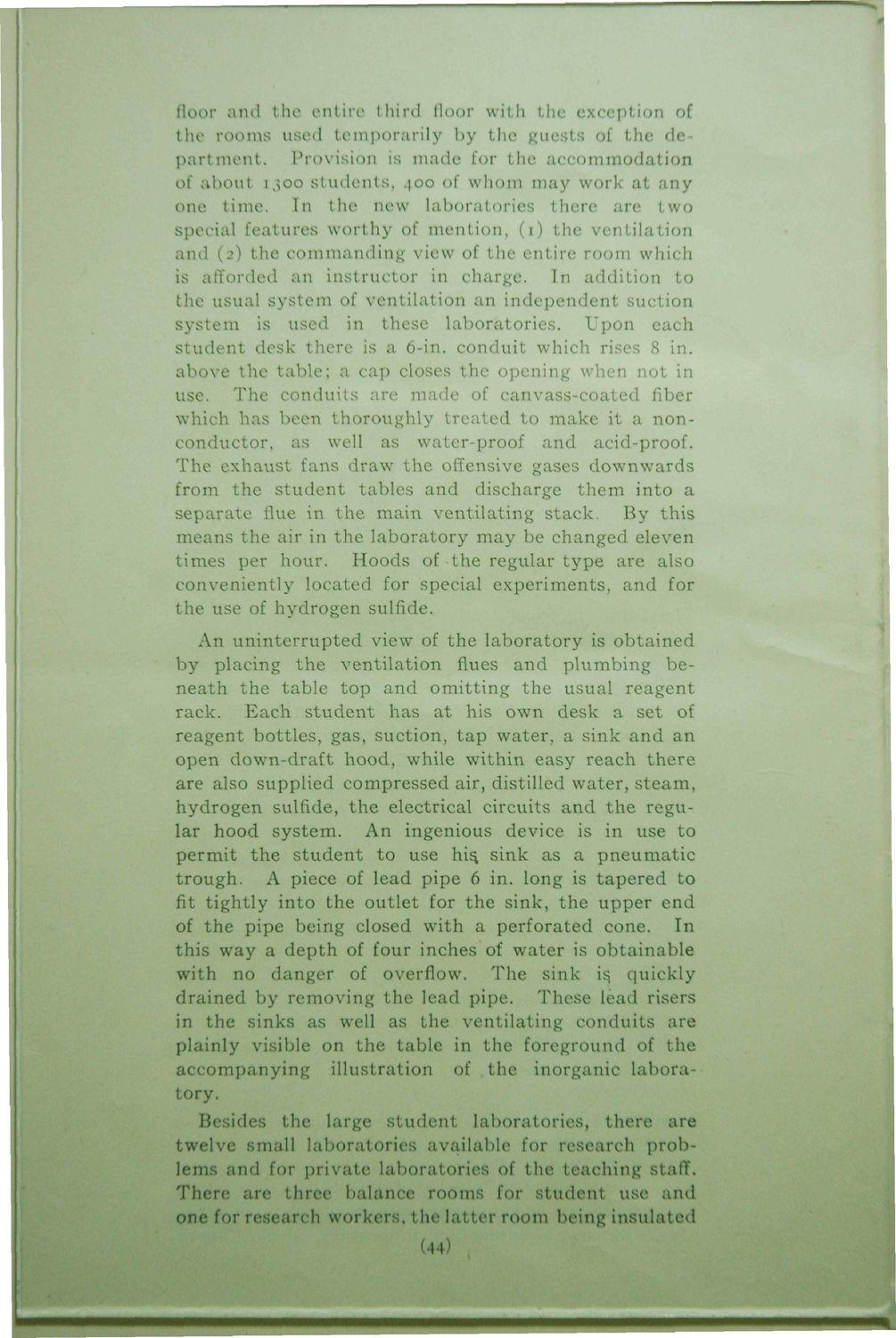| |
| |
Caption: Dedication - New Chemistry Building
This is a reduced-resolution page image for fast online browsing.

EXTRACTED TEXT FROM PAGE:
floor and the entire third floor with the exception of the rooms used temporarily by the guests of the department. Provision is made for the accommodation of about 1300 students, 400 of whom may work at any one time. In the new laboratories there are two special features worthy of mention, (1) the ventilation and (2) the commanding view of the entire room which is afforded an instructor in charge. In addition to the usual system of ventilation an independent suction system is used in these laboratories. Upon each student desk there is a 6-in. conduit which rises 8 in. above the table; a cap closes the opening when not in use. The conduits are made of canvass-coated fiber which has been thoroughly treated to make it a nonconductor, as well as water-proof and acid-proof. The exhaust fans draw the offensive gases downwards from the student tables and discharge them into a separate flue in the main ventilating stack. By this means the air in the laboratory may be changed eleven times per hour. Hoods of the regular type are also conveniently located for special experiments, and for the use of hydrogen sulfide. An uninterrupted view of the laboratory is obtained by placing the ventilation flues and plumbing beneath the table top and omitting the usual reagent rack. Each student has at his own desk a set of reagent bottles, gas, suction, tap water, a sink and an open down-draft hood, while within easy reach there are also supplied compressed air, distilled water, steam, hydrogen sulfide, the electrical circuits and the regular hood system. An ingenious device is in use to permit the student to use hi$ sink as a pneumatic trough. A piece of lead pipe 6 in. long is tapered to fit tightly into the outlet for the sink, the upper end of the pipe being closed with a perforated cone. In this way a depth of four inches of water is obtainable with no danger of overflow. The sink i§ quickly drained by removing the lead pipe. These lead risers in the sinks as well as the ventilating conduits are plainly visible on the table in the foreground of the accompanying illustration of the inorganic laboratory. Besides the large student laboratories, there are twelve small laboratories available for research problems and for private laboratories of the teaching staff. There are three balance rooms for student use and one for research workers, the latter room being insulated (44)
| |